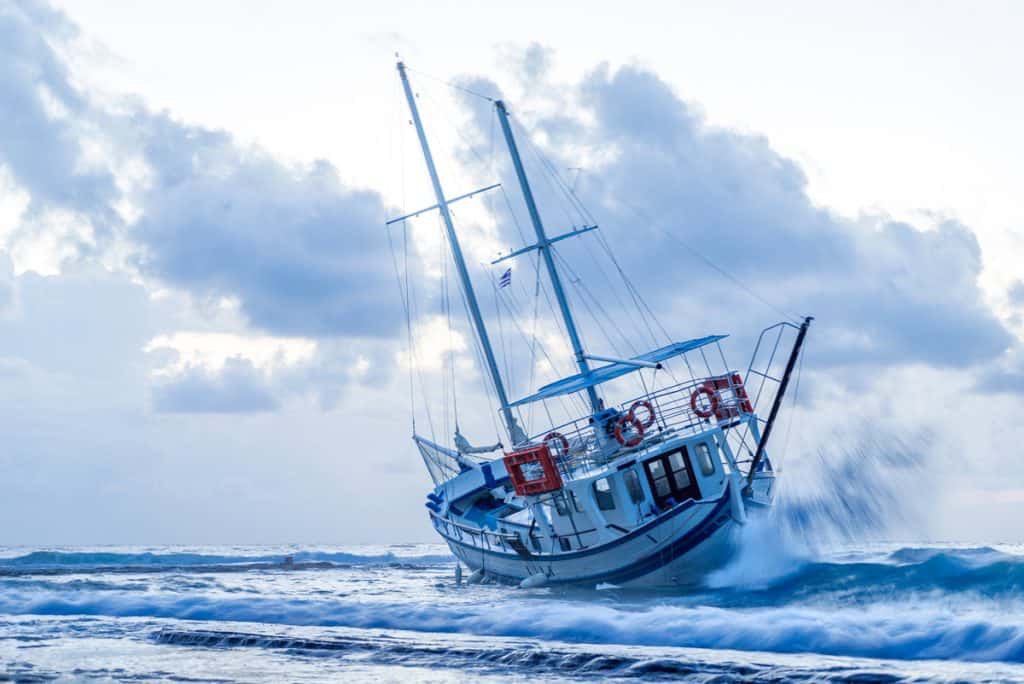What is a bilge pump used for?
Bilge pumps are responsible for getting rid of accumulated water that can build up in the bottom of your bilge.
Is a bilge pump necessary?
No, you don’t need a bilge pump, most craft can float with water in the boat. The question is how much water is too much. Obviously, at some point you will want to remove the water and other than using a bucket, a bilge pump is a cheap and convenient solution to get rid of the unnecessary water. To learn more about bilge pumps and what kit is right for your vessel, read our blog post on ‘Bilge Pump Kits for Boats.’
How much does it cost to replace a bilge pump?
Bilge pumps start from under $30 and go up well over $400. It all depends on the features and capacity of the of bilge pump. To check out our range of bilge pumps.
Manual Pumps
As their name suggests, a manual operated pump that requires the water to be physically pumped out. They can move large quantities of water however they require substantial effort from the operator.
Manual pumps are an ideal companion to you electric models standby fail safe in the event of your electrics failing.
Centrifugal Pumps
The most common and well established model of pump, these are high capacity electrical pumps that rely on a “wheel” driven by a shaft to pump the water. These are a popular pump and can move a lot of water quickly. A big plus with Centrifugal pumps is that they are able to run without water for short periods of time without doing any immediate damage to the pump.
Do bilge pumps come on automatically?
Some pump are built with an internal float switch that will turn the pump on when the water gets to a certain height. If the pump does not have an internal float switch you can add one to your setup and that will turn on your pump.
Diaphragm Pumps
These pumps move fluid by making use of a membrane that increases and decreases the volume of a pumping chamber. They draw the fluid in and push it out through a set of one-way check valves. They are a self-priming pump which is a big plus. But they do require a strainer on the intake side as any form of debris that can inhibit the performance of the pump.
Automatic Pumps
These pumps operate automatically and are dependent on some form of switch mechanism to start the bilge pump. These switches can be in the form of either a float switch or an electronic sensing switch. These pumps regulate the level of water in your boat automatically but still need to be checked periodically as your vessel may experience a leak that could be getting worse over time and eventually overtake the pumps capacity.
Float Switch
A switch that engages an automatic pump. It works on the level of water in the vessel’s bilge, as the water level increases to a point that is above the float on the switch it will engage your bilge pump. Once the level of the water decreases below that of the float it will automatically switch off the pump.
Electronic Sensor Switch
A switch that automatically switches your pump on or off by sensing the presence of water through the plastic housing. The good thing about these switches is that they have no moving parts so wear and tear is not an issue.
There are a number of different types of pumps and manufacturers. However, the most important part of selecting a pump is to choose the correct model for your vessel. The size, model and build of your boat will help determine which pump is right for you.
Boat Size
All electric bilge pumps are rated according to how much water they can move. This unimpeded flow rate is measured in gallons per hour or gallons per minute. The size of the pump that you choose will generally depend on the size of the boat that you own; but don’t fall into the trap of thinking that a small boat only needs a small pump. Lower sides and smaller compartments mean that they are affected a lot quicker by water ingress. Fitting an oversize pump is a very good idea.
| In small to medium sized powered vessels: | |
| Vessel size: | |
| under 18 feet - 300 to 500 gallons per hour | under 5.5 metres - 1135 to 1892 litres per hour |
| 18 to 23 feet - 450 to 700 gallons per hour | 5.5 to 7 metres - 1703 to 2649 litres per hour |
| 22 to 26 feet - 100 to 1100 gallons per hour | 7 to 7.9 metres - 378 to 4163 litres per hour |
| In larger Powerboats: | |
| As your vessel size increases you would need to look at the addition of a manual pump as well as your electrical pump. This will give you peace of mind if your electrical pump fails, you will still be able to pump the water out manually. If your vessel has severalcompartments in, then fitting a pump to each compartment can be a very good idea. Its always better to have too many pumps than too few! | |
| Vessel size: | |
| 26 to 30 feet - 800 to 1200 gallons per hour | 7.9 to 9.1 metres - 3028 to 4542 litres per hour |
| 30 to 35 feet - 1000 to 1600 gallons per hour | 9.1 to 10.7 metres - 3785 to 6056 litres per hour |
| 35 to 40 feet - 1600 to 2200 gallons per hour | 10.7 to 12.2 metres - 6056 to 8327 litres per hour |
| 40 to 45 feet - 2000 to 4000 gallons per hour | 12.2 to 13.7 metres - 7570 to 15141 litres per hour |
| In Sail Boats: | |
| Sailing boats can fall into another category altogether as they can list steeply while under sail, their bilges can be a lot deeper than standard vessels; and they can operate in rougher conditions than most other boats. Due to these facts, multiple pumps as well as a manual standby pump would be a good idea. | |
| Vessel size: | |
| 22 to 26 feet - 600 to 800 gallons per hour | 6.7 to 7.9 metres - 2271 to 3028 litres per hour |
| 26 to 30 feet - 800 to 1000 gallons per hour | 7.9 to 9.1 metres - 3028 to 3785 litres per hour |
| 30 to 35 feet - 1000 to 1600 gallons per hour | 9.1 to 10.7 metres - 3785 to 6056 litres per hour |
| 35 to 40 feet - 1600 to 2200 gallons per hour | 10.7 to 12.2 metres - 6056 to 7570 litres per hour |
| 40 to 45 feet - 2000 to 4000 gallons per hour | 12.2 to 13.7 metres - 7570 to 15141 litres per hour |
Installation hints:
- Always ensure that you stick to the manufacturers recommendations with regards to wire grades and thicknesses
- Keep discharge hoses as short as possible
- Use smooth bore hoses – corrugated hosing can affect the performance of your pumps
- Use vented loops if the thru hull fitting on the outlet side can be submerged, for example on sailboats that heel over while under sail
Technical information source: BLA.com.au Boating Lifestyle Adventure




Very informative! My knowledge on Boat Pumps has increased when I read this article!